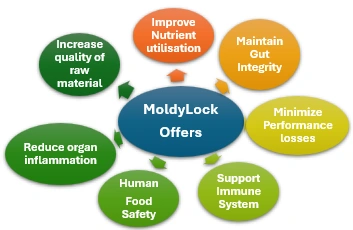
Mycotoxins In Feed: Challenges and Mitigation Strategies
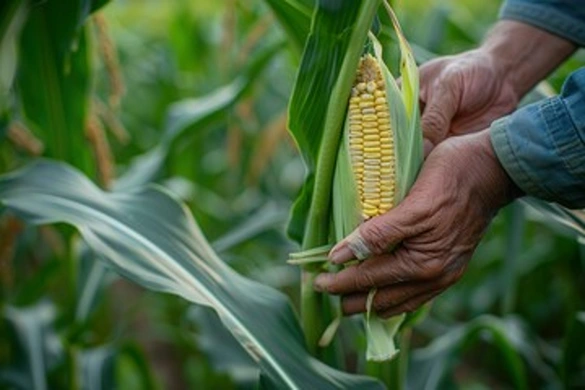
What are Mycotoxins?
Mycotoxins are widespread, such as grain growth, harvesting, storage and on-site feeding management. Mycotoxins are very harmful to poultry, swine and Aqua.
Mycotoxins, toxic secondary metabolites produced by fungi, pose significant health risks to poultry and swine. Their presence in feed can lead to a myriad of adverse effects, severely impacting the health and productivity of livestock.
South Asia levels of aflatoxins were highest (70%), followed by ochratoxins (66%), T2 (64%) and FUM (70%). In North America prevalence of ZEN (75%) and DON (73%) were highest.
Consequences of mycotoxin:
Mycotoxins, toxic secondary metabolites produced by fungi, can have severe consequences on the health and productivity of fishes and shrimps. These effects can manifest at various levels, impacting growth, immunity, reproduction, and overall survival. Below is a summary of the consequences of mycotoxins in fishes and shrimps:
1. Reduced Growth and Productivity
• Fishes: Mycotoxins like aflatoxins and ochratoxins interfere with feed intake, digestion, and nutrient absorption, leading to stunted growth and poor feed conversion ratios (FCR).
• Shrimps: Aflatoxins and fumonisins impair protein synthesis, affecting molting cycles and growth, leading to smaller sizes and lower yield.
2. Immunosuppression
• Fishes: Mycotoxins compromise the immune system by reducing white blood cell counts and impairing antibody production, making fishes more vulnerable to bacterial, viral, and parasitic infections.
• Shrimps: Immunosuppression weakens the ability to combat pathogens like Vibrio spp., leading to higher mortality rates and diseases like Early Mortality Syndrome (EMS).
3. Organ Damage
• Liver Damage: Both fishes and shrimps suffer from hepatotoxicity, causing liver enlargement, discoloration, and impaired metabolic functions.
• Gills and Kidneys: Ochratoxins and aflatoxins cause lesions and damage to gills and kidneys in fishes, affecting respiration and osmoregulation.
4. Reproductive Impairments
• Fishes: Mycotoxins like zearalenone disrupt endocrine function, leading to poor spawning rates and reduced egg viability.
• Shrimps: Negative effects on molting and reproduction reduce the quality and quantity of nauplii, affecting hatchery productivity.
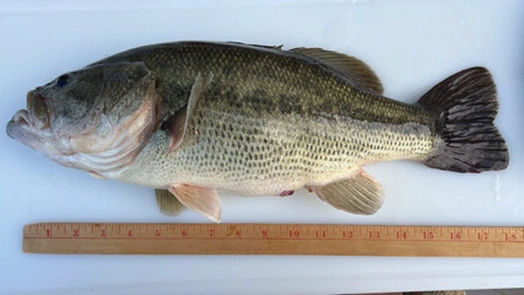
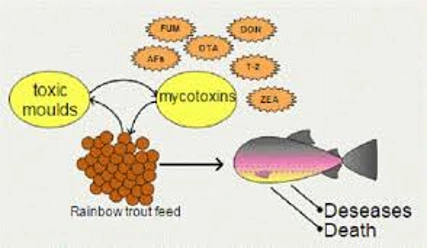
5. Increased Mortality
• Acute Toxicity: High levels of mycotoxins in feed cause rapid mortality in both fishes and shrimps due to severe organ failure.
• Chronic Exposure: Long-term exposure to low levels leads to cumulative damage, increasing susceptibility to diseases and stress.
6. Secondary Infections and Disease Outbreaks• Mycotoxin-induced stress and immunosuppression in fishes and shrimps create opportunities for outbreaks of bacterial and viral infections, leading to significant economic losses.
7. Reduced Feed Efficiency
• Contaminated feed disrupts digestion and metabolism, wasting feed resources and increasing production costs.
8. Residues in Aquatic Products
• Mycotoxins accumulate in tissues, potentially affecting human consumers and leading to market rejection of contaminated products.
9. Altered Behaviour
• Both fishes and shrimps exhibit abnormal swimming or feeding behaviour due to neurological impacts of certain mycotoxins like fumonisins.
10. Economic Losses
• Decreased growth rates, increased mortality, and reduced market acceptance result in substantial economic losses for the aquaculture industry.
Management Strategies
• Use of mycotoxin binders or detoxifiers in feed.
• Proper feed storage to prevent fungal contamination.
• Regular feed quality testing.
• Incorporation of functional additives like yeast cell walls and probiotics to mitigate effects.
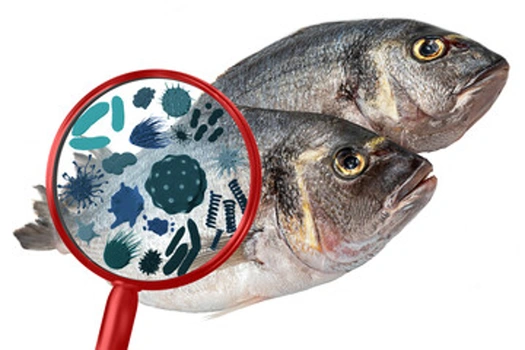
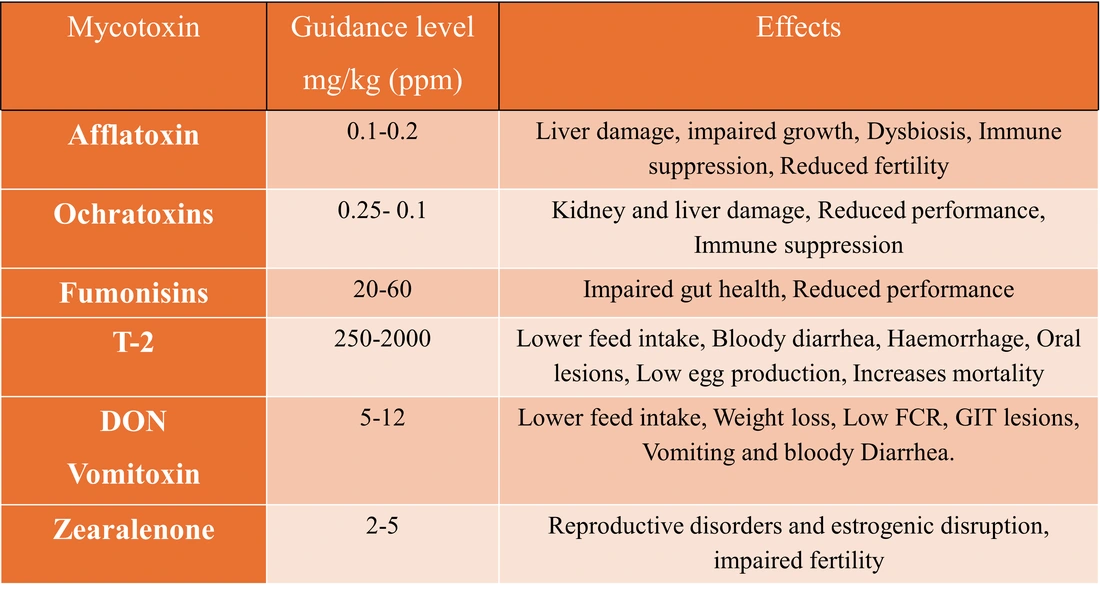
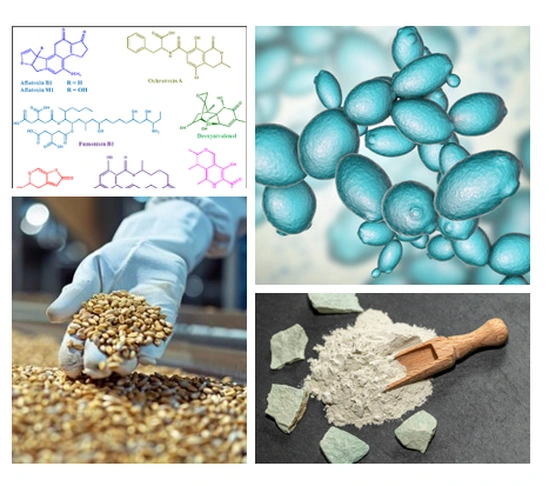
Our Solution
Consumers
increasingly demand assurance that animal products are cleaned and safe,
leading to a growing preference for natural solutions for mycotoxin mitigation.
Vansh Specialties addresses
this need by focusing on natural detoxifiers such as Yeast, enzymes and plant
extracts.
MoldyLock
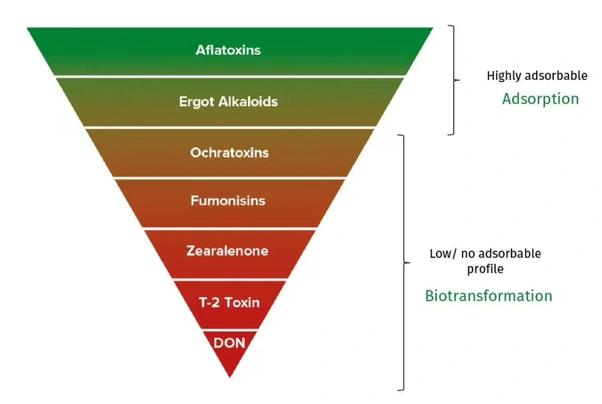
What is MoldyLock?
Organic mycotoxin binder, highly selective mechanism of action against mycotoxin to mitigate their harmful effects that promotes intestinal health and consequently animal performance.
Mode of Action:
Toxin binders in poultry feed work by altering or adsorbing mycotoxins to reduce their toxicity and enhance excretion. However, clay binders are ineffective against trichothecenes mycotoxins. Biotransformation using microbes and enzymes is more effective, breaking down mycotoxins into non-toxic metabolites.
Microbial methods of mycotoxin directly absorb and metabolise toxins, adsorb/bind them or secrete enzymes that degrade toxins. Additionally, feed additives with plant and algae extracts offer liver protection and counteract immune suppression.
Combining these strategies provides better protection against mycotoxins, especially for multi-mycotoxin contamination in poultry feed.

Key Features of MoldyLock:
- Selectivity for wide range of mycotoxins (DON, ZEN, AFB1, OTA)
- Sparing useful elements eg, macro and Micro minerals, Amino acids.
- Low Effective inclusion rate, High efficacy in mycotoxin binding
- Rapid and uniform dispersion
- Heat stability, Stable at wide pH range for effective mycotoxin binding throughout the gut.
- Biodegradable after excretion
